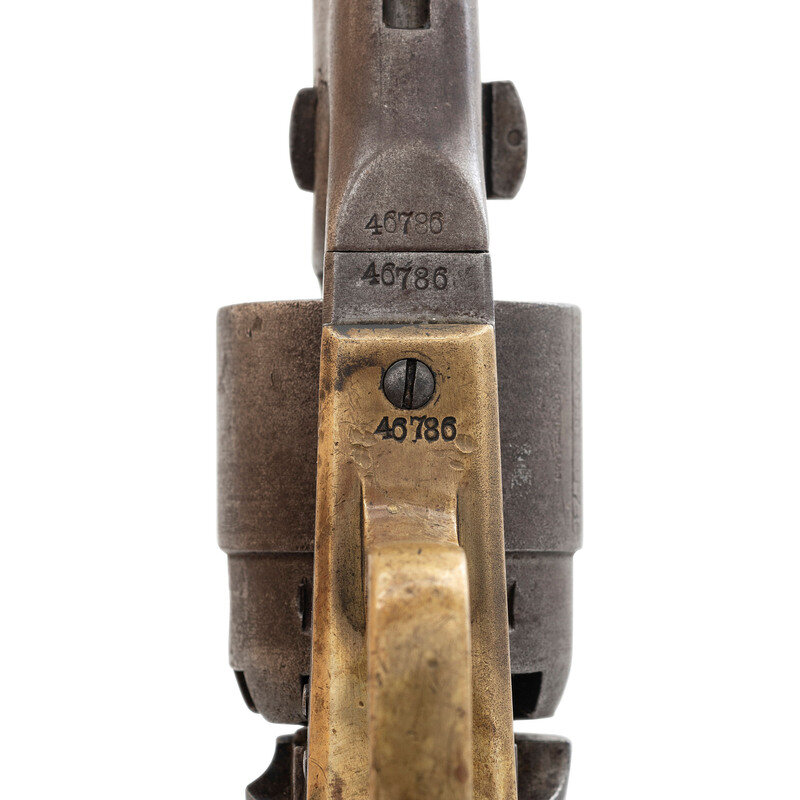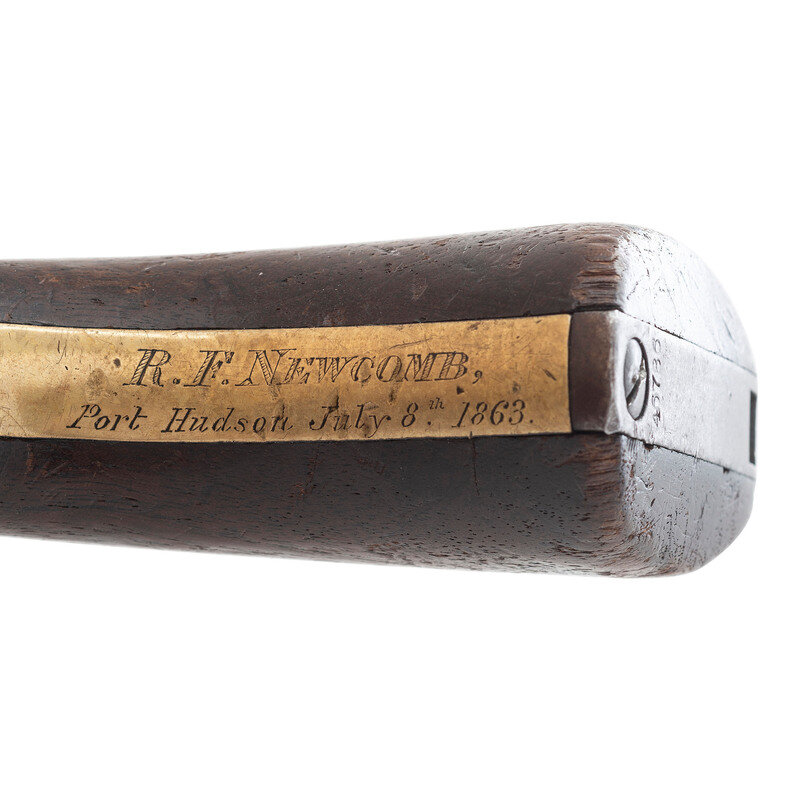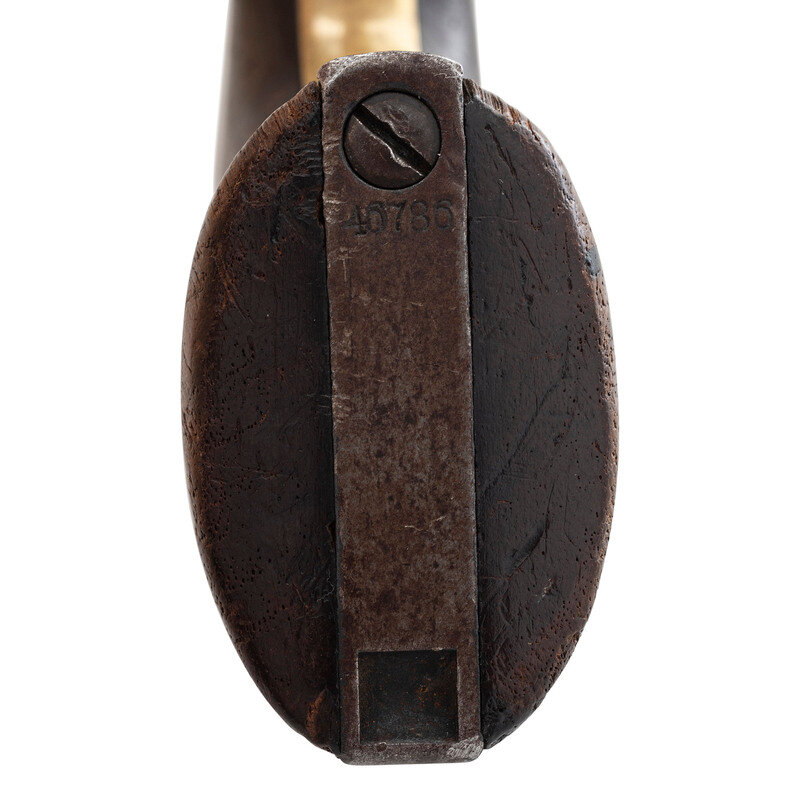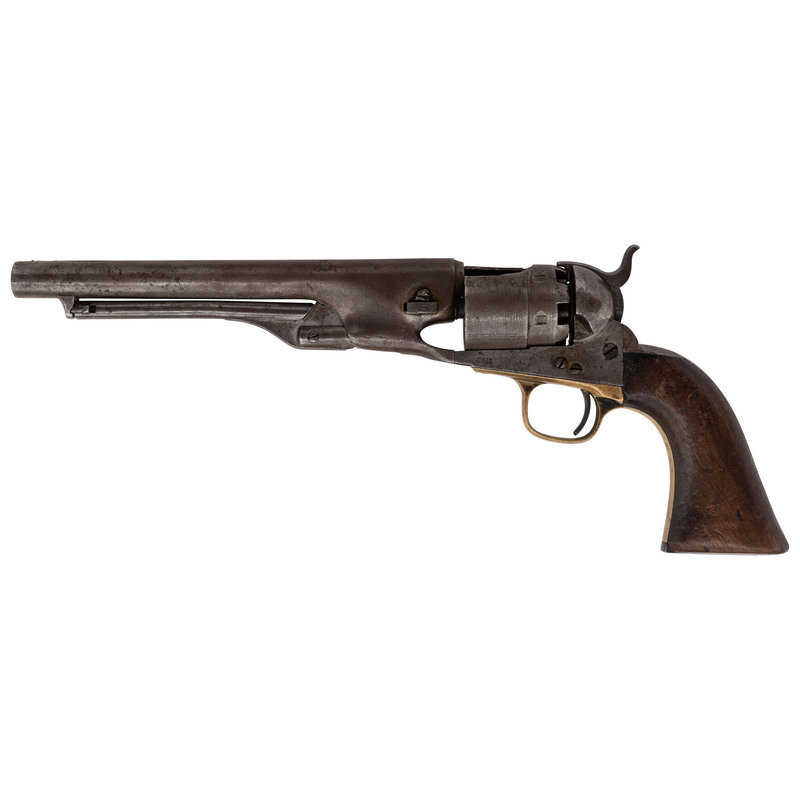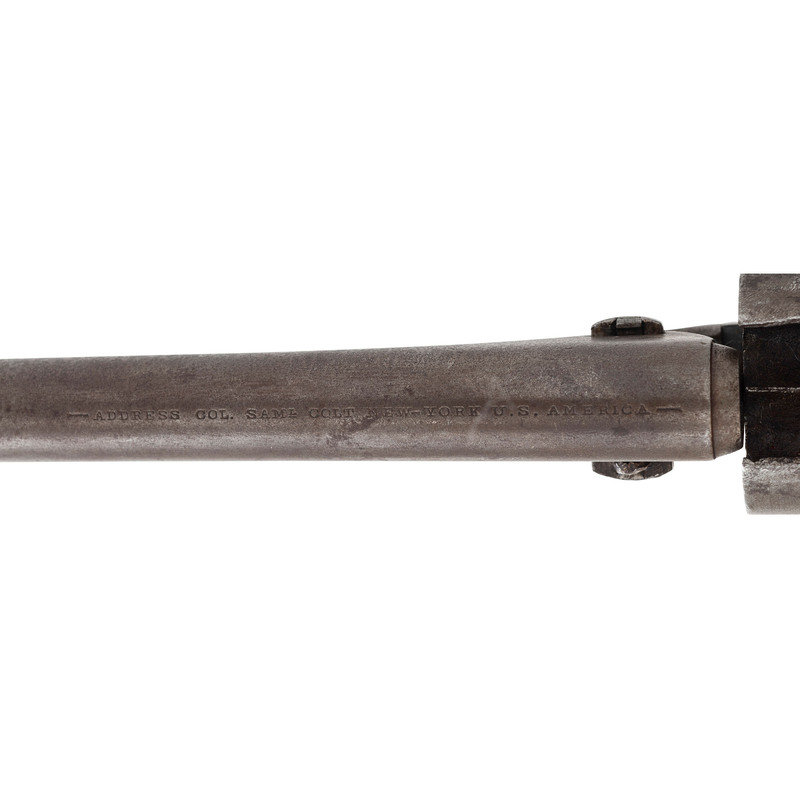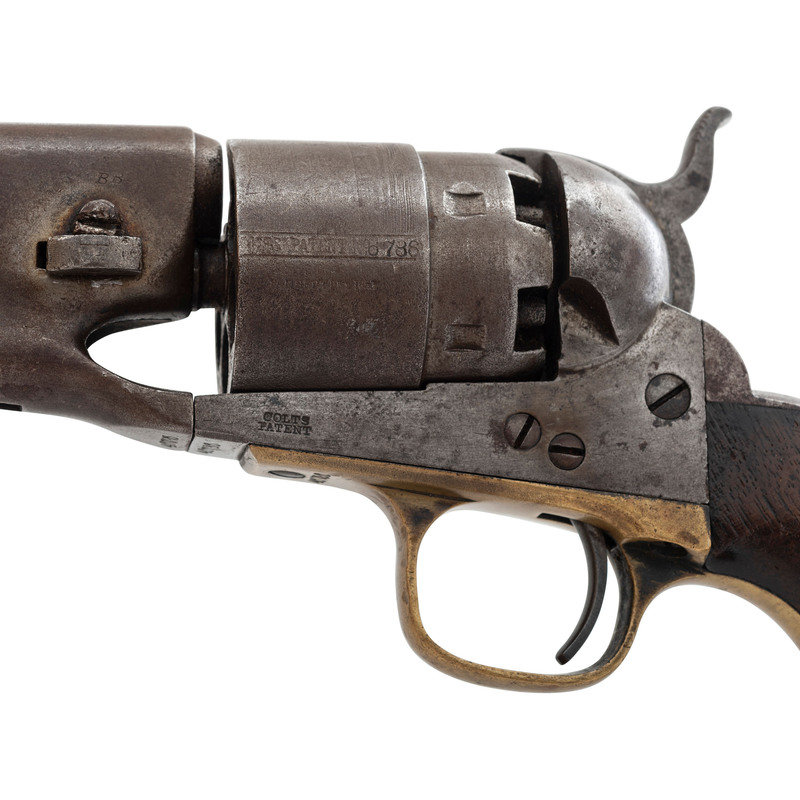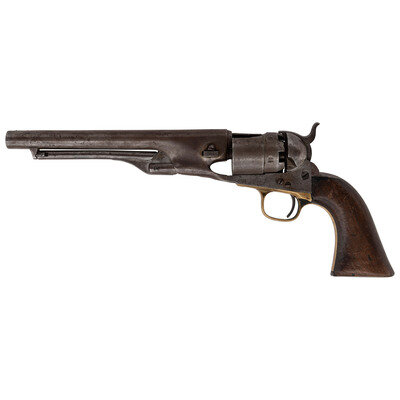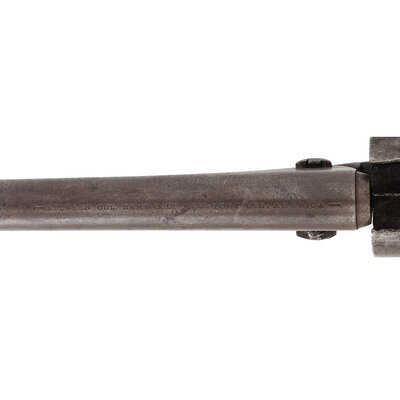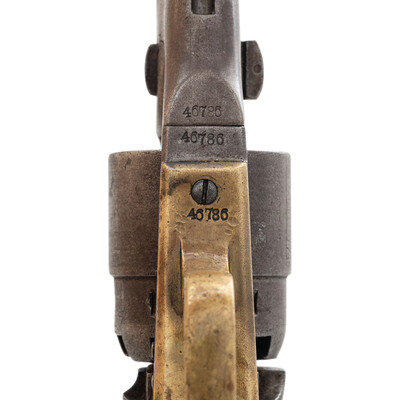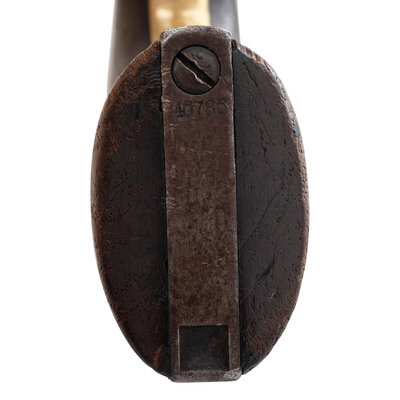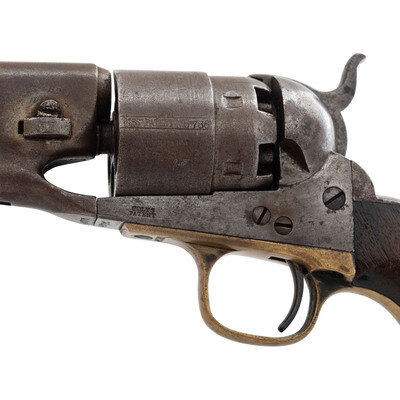Condition Report
Contact Information
Auction Specialist
Lot 47
Lot Description
.44 caliber. 8" round barrel. SN: 46786. Blued and color casehardened finish, brass triggerguard, one-piece walnut grip. Single action percussion revolver with three-screw frame, smooth round rebated cylinder. Barrel marked in a single line: - ADDRESS COL SAML. COLT NEW-YORK U.S. AMERICAN -. The standard two-line COLT'S/PATENT mark is on the lower front edge of the left of the frame and small single and double letter sub-inspector marks are found on the barrel, cylinder, backstrap and front strap. No cartouches are visible. Cylinder with two chambers blown out and retaining traces of the Texas and Mexican naval battle engagement scene. Matching serial numbers throughout, including the wedge. Rear sight notch in hammer nose, front sight blade missing. Front strap of revolver engraved R.F. NEWCOMB/Port Hudson July 8th, 1863. A small folder of information about Newcomb and associated research is included with the revolver.
Richard F Newcomb (1837-1904) was a 25 year-old merchant when he enlisted as a sergeant in Company A of the 52nd Massachusetts Infantry on September 9, 1862. The 52nd MA Infantry was raised in response to Lincoln's call for 300,000 more volunteers to suppress the southern rebellion and upon formation was ordered to Louisiana for service under General Nathaniel Banks in the Department of the Gulf. They participated in the Bayou Teche campaign as a prelude the campaign against Port Hudson and were engaged in that siege as well. The Confederates surrendered at Port Hudson on July 9, 1863 and two weeks later the 52nd MA was shipped back to Massachusetts to be mustered out on August 14, 1863. The supposition would be that Sergeant Newcomb was using this revolver when it suffered its catastrophic failure, likely on July 8, 1863 as noted in the inscription, and that he kept it as a memento and had it engraved to commemorate the event after the war. After the war Newcomb relocated to Illinois where he was a member of the Quincy G.A.R. Post #96 and he died in May of 1904.



